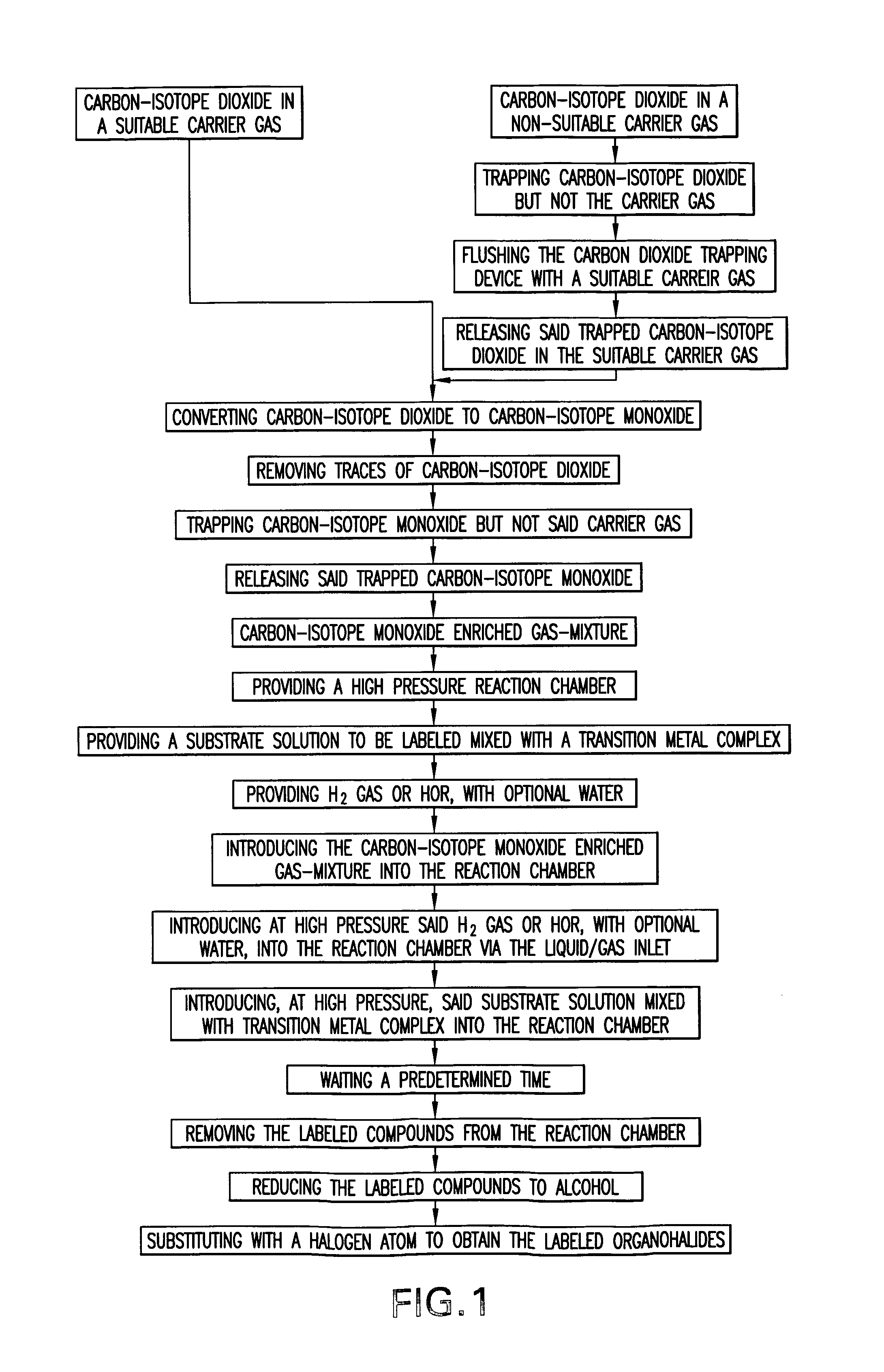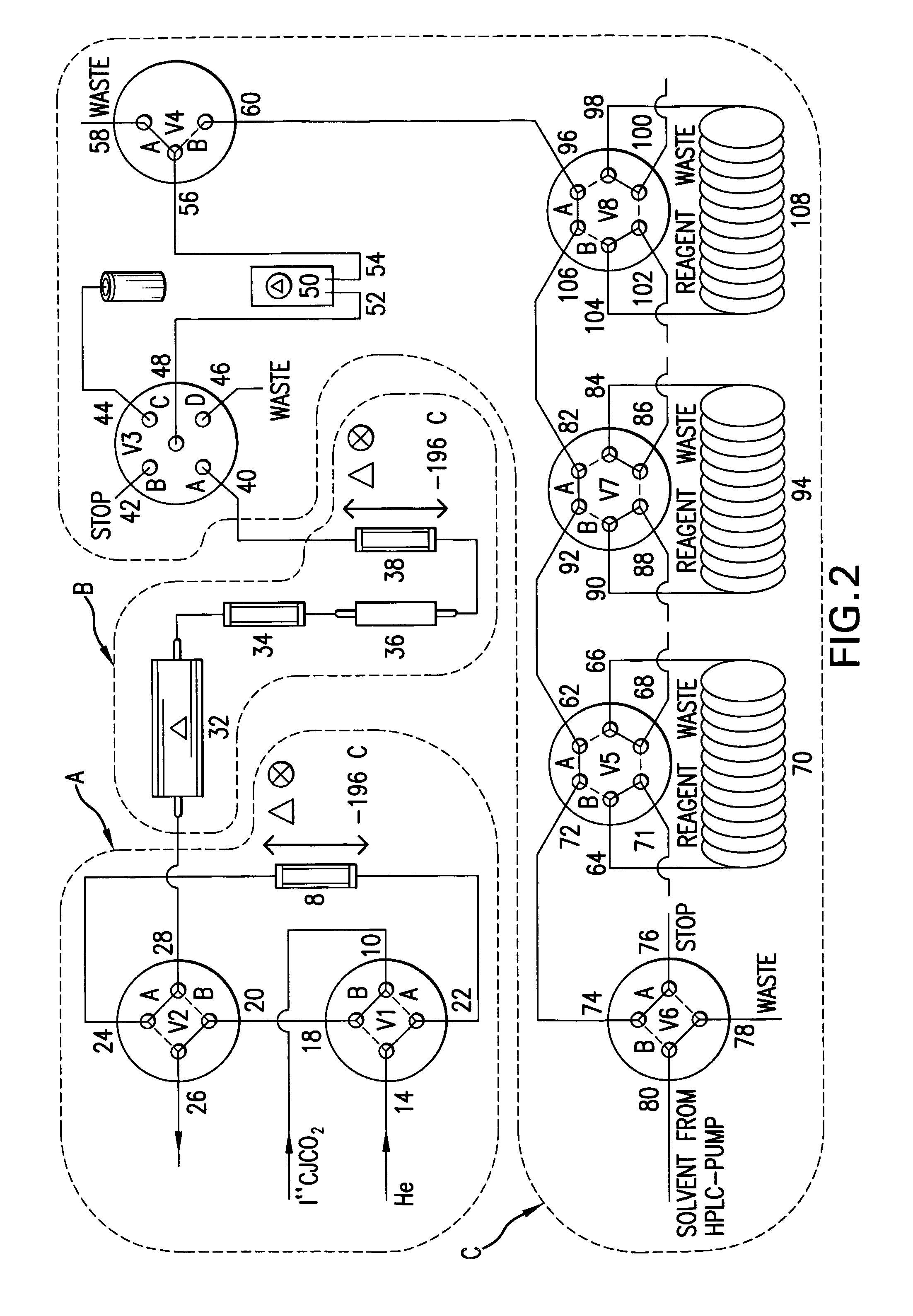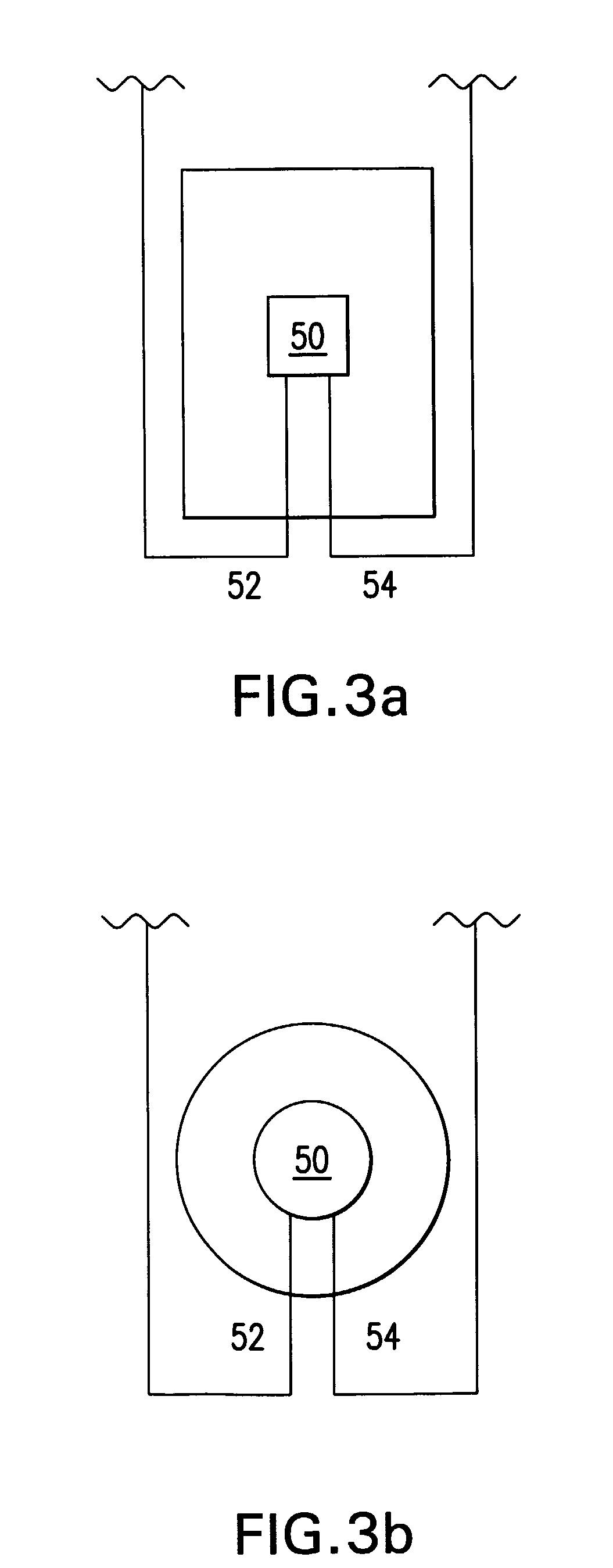Methods to prepare carbon-isotope labeled organohalides with high specific radioactivity from carbon-isotope monoxide
a technology of carbon-isotope monoxide and radioactivity, which is applied in the field of radiodiagnostic agents and diagnostics, can solve the problems of low reaction media trapping efficiency, unfavorable pet-tracer production, and construction of reactors
- Summary
- Abstract
- Description
- Claims
- Application Information
AI Technical Summary
Benefits of technology
Problems solved by technology
Method used
Image
Examples
example 1
Experimental Setup
[0144][11C]Carbon dioxide production was performed using a Scanditronix MC-17 cyclotron at Uppsala IMANET. The 14N(p,α)11C reaction was employed in a gas target containing nitrogen (Nitrogen 6.0) and 0.1% oxygen (Oxygen 4.8) which was bombarded with 17 MeV protons.
[0145][11C]Carbon monoxide was obtained by reduction of [11C]carbon dioxide as described in the instant application.
[0146]The syntheses with [11C]carbon monoxide were performed with an automated module as part of the system “Synthia 2000”. [11C]carbon dioxide was trapped on a column (Porapac Q) at −196° C. and released by heating and reduced during its passage through a zinc filled tube at 400° C. HPLC analysis was performed with a Beckman 126-gradient pump and a Beckman 166 variable wavelength UV-detector in series with a β+-flow detector. The analytical column was a Beckman Ultrasphere ODS C18 (250×4.6 mm id).
example 2
Synthesis of [1-11C] Ethyl Iodide
[0147]The general reaction scheme is illustrated as follows:
[0148]
[0149]Alternatively, when acids are obtained due to small amount of water in the reagents, the reaction scheme becomes:
[0150]
[0151]Tris(dibenzylideneacetone)dipalladium(0) (0.80 mg, 0.87 μmol) and triphenylphosphine (2.7 mg, 10.3 μmol, 12 equiv.) were placed in a 0.8 ml vial equipped with a rubber septum. THF (360 μl) was added and the resulting solution was degassed with argon. Methyl iodide (1.0 μl, 16 μmol, 18 equiv.) was added. The solution was loaded into an injection valve loop. A second injection valve loop was loaded with hydrogen gas (1.0 ml, 1 atm.). THF was pumped through the two injection loops and the reagents were pumped into a 200 μl Teflon coated stainless steel micro-autoclave containing [11C]CO. The micro-autoclave was heated for 5 min at 120° C. The reaction mixture was transferred to a 2 ml septum-equipped evacuated glass vial containing lithium aluminium hydride (1...
example 3
Synthesis of [1-11C] Propyl Iodide
[0154]The general reaction scheme is illustrated as follows:
[0155]
[0156]Tris(dibenzylideneacetone)dipalladium(0) (0.7 mg, 0.76 μmol), triphenylphosphine (2.7 mg, 10.3 μmol, 12 equiv.) and p-toluenesulfonic acid (3.9 mg, 20.5 μmol) were placed in a 0.8 ml vial equipped with rubber septum. THF (360 μl) was added and the resulting solution was degassed with argon. The solution was loaded into an injection valve loop. A second injection valve loop was loaded with ethene (1.0 ml, 1 atm.). A third injection valve loop was loaded with hydrogen gas (0.7 ml, 1 atm.). THF was pumped through all three injection loops and the reagents were pumped into a 200 μl Teflon coated stainless steel micro-autoclave containing [11C]CO. The reagents were contained in the autoclave for 5 min at room temperature. Then the reaction mixture was transferred to a 2 ml septa-equipped evacuated glass vial containing lithium aluminium hydride (100 μl, 1 M). The vial was heated at 1...
PUM
| Property | Measurement | Unit |
|---|---|---|
| pressure | aaaaa | aaaaa |
| temperatures | aaaaa | aaaaa |
| pressure | aaaaa | aaaaa |
Abstract
Description
Claims
Application Information
 Login to View More
Login to View More - R&D
- Intellectual Property
- Life Sciences
- Materials
- Tech Scout
- Unparalleled Data Quality
- Higher Quality Content
- 60% Fewer Hallucinations
Browse by: Latest US Patents, China's latest patents, Technical Efficacy Thesaurus, Application Domain, Technology Topic, Popular Technical Reports.
© 2025 PatSnap. All rights reserved.Legal|Privacy policy|Modern Slavery Act Transparency Statement|Sitemap|About US| Contact US: help@patsnap.com



